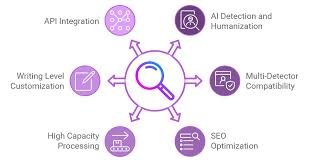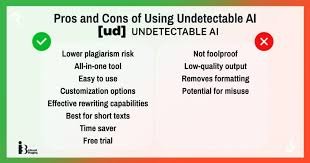Artificial intelligence (AI) has revolutionized various industries, from content creation to automation. Undetectable AI refers to AI-generated text that mimics human writing so well that it cannot be identified as AI-generated by detection tools. As AI continues to evolve, businesses, marketers, and writers seek solutions that ensure undetectable AI meets the standards of originality and authenticity.
Table of Contents
How Does Undetectable AI Work?
The technology behind undetectable AI relies on advanced natural language processing (NLP) and deep learning models. These models analyze human writing patterns, grammar, and nuances, allowing undetectable AI to produce text that flows naturally. By avoiding predictable structures and implementing diverse sentence patterns, AI-generated content can bypass detection tools.
The Importance of Undetectable AI in Content Creation
Content creators, marketers, and businesses rely on AI to generate articles, blogs, and advertisements. Undetectable AI ensures that AI-generated content passes plagiarism and AI detection tests, making it more acceptable for publication. This technology allows writers to save time and effort while maintaining quality and originality.
Key Benefits of Undetectable AI

- Authenticity – Undetectable AI produces natural and engaging text that closely resembles human writing.
- Bypassing AI Detection – With the advancement of AI detection tools, undetectable AI helps users maintain originality and avoid flagged content.
- Time Efficiency – Writers and businesses can produce high-quality content at scale using undetectable AI.
- Cost-Effective – Automating content creation through undetectable AI reduces the need for human writers, saving money.
Challenges of Undetectable AI
Despite its advantages, undetectable AI poses some challenges. Ethical concerns arise regarding AI-generated content being passed off as human-written without disclosure. Additionally, improving undetectable AI to maintain coherence and avoid factual inaccuracies is an ongoing challenge for developers.
Applications of Undetectable AI Across Industries
Undetectable AI is widely used in various industries, including:
- Marketing and Advertising – Companies use undetectable AI to generate ad copies, product descriptions, and promotional content.
- Education – Students and researchers use undetectable AI for essays, reports, and academic writing.
- E-commerce – Online stores leverage undetectable AI to create compelling product listings and reviews.
- Social Media Management – Brands use undetectable AI to craft engaging posts and maintain an online presence.
How to Optimize Undetectable AI for Better Results

To ensure high-quality content, users can optimize undetectable AI by:
- Training AI on High-Quality Data – Feeding diverse and well-structured data improves the performance of undetectable AI.
- Human Editing and Proofreading – Even with undetectable AI, human oversight ensures better readability and accuracy.
- Avoiding Predictable Patterns – Using varied sentence structures helps undetectable AI remain undetected.
Future Trends in Undetectable AI
The future of undetectable AI is promising, with advancements in AI models and ethical considerations. Researchers are working on improving AI’s contextual understanding, making undetectable AI more sophisticated and reliable. Additionally, stricter regulations may arise to ensure ethical AI usage in content creation.
Also read Pepperoncini A Guide to the Spicy and Tangy Chili Pepper
Conclusion: The Role of Undetectable AI in the Digital Age
As AI-generated content becomes more prevalent, undetectable AI plays a crucial role in ensuring seamless and natural writing. Whether for businesses, content creators, or students, undetectable AI offers a solution that balances efficiency, originality, and authenticity. Embracing this technology while addressing ethical concerns will define the future of AI in content generation.


